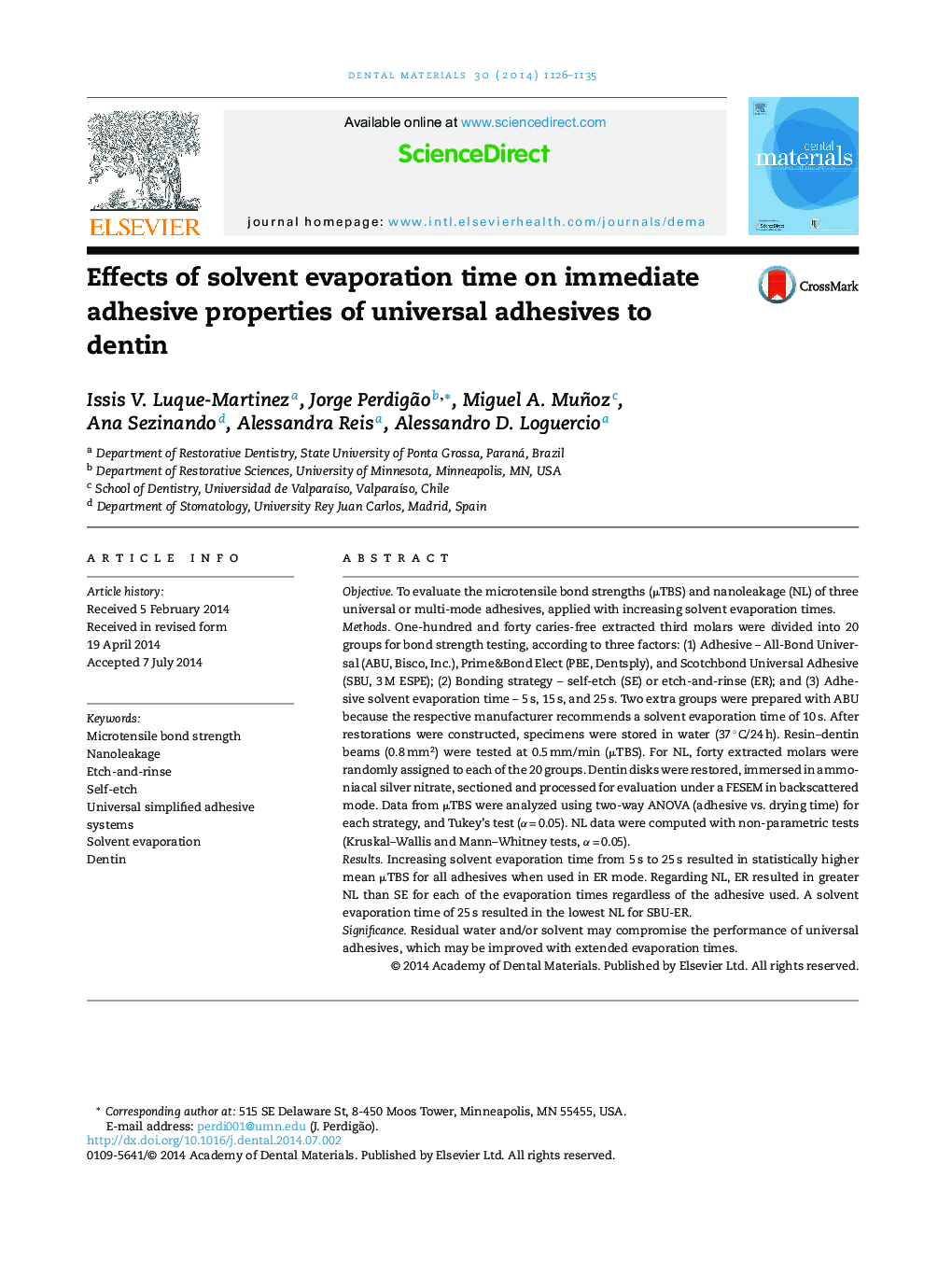| Article ID | Journal | Published Year | Pages | File Type |
|---|---|---|---|---|
| 1420916 | Dental Materials | 2014 | 10 Pages |
ObjectiveTo evaluate the microtensile bond strengths (μTBS) and nanoleakage (NL) of three universal or multi-mode adhesives, applied with increasing solvent evaporation times.MethodsOne-hundred and forty caries-free extracted third molars were divided into 20 groups for bond strength testing, according to three factors: (1) Adhesive – All-Bond Universal (ABU, Bisco, Inc.), Prime&Bond Elect (PBE, Dentsply), and Scotchbond Universal Adhesive (SBU, 3 M ESPE); (2) Bonding strategy – self-etch (SE) or etch-and-rinse (ER); and (3) Adhesive solvent evaporation time – 5 s, 15 s, and 25 s. Two extra groups were prepared with ABU because the respective manufacturer recommends a solvent evaporation time of 10 s. After restorations were constructed, specimens were stored in water (37 °C/24 h). Resin–dentin beams (0.8 mm2) were tested at 0.5 mm/min (μTBS). For NL, forty extracted molars were randomly assigned to each of the 20 groups. Dentin disks were restored, immersed in ammoniacal silver nitrate, sectioned and processed for evaluation under a FESEM in backscattered mode. Data from μTBS were analyzed using two-way ANOVA (adhesive vs. drying time) for each strategy, and Tukey's test (α = 0.05). NL data were computed with non-parametric tests (Kruskal–Wallis and Mann–Whitney tests, α = 0.05).ResultsIncreasing solvent evaporation time from 5 s to 25 s resulted in statistically higher mean μTBS for all adhesives when used in ER mode. Regarding NL, ER resulted in greater NL than SE for each of the evaporation times regardless of the adhesive used. A solvent evaporation time of 25 s resulted in the lowest NL for SBU-ER.SignificanceResidual water and/or solvent may compromise the performance of universal adhesives, which may be improved with extended evaporation times.
